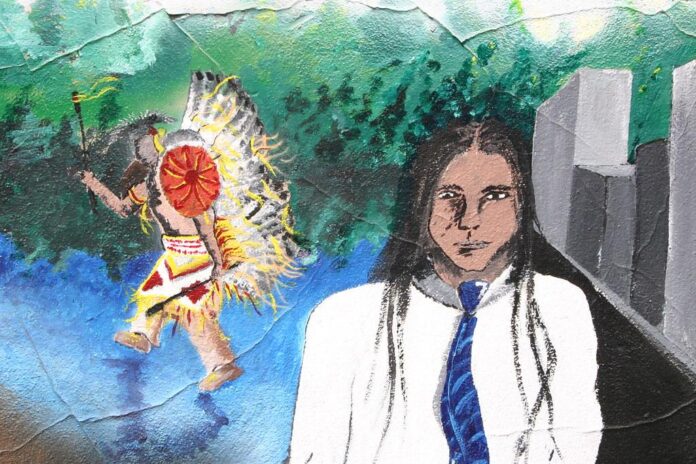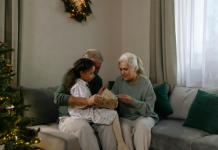At this point, it’s generally known that European settlers didn’t exactly “discover” America in the 15th century.
By the time that European settlers arrived in the 15th century, claiming to have discovered America, over 50 million Indigenous people were already living there and had been for millenia. Scholars believe the ancestors of modern Native Americans originally migrated to the land over 12,000 years ago via a “land bridge” from Asia to Alaska. Indigenous people in America had an established culture and successful way of life much before Europeans settled and forced their culture upon the Native people.
Fast forward to modern-day America and the melting pot that it’s evolved into, both ancient cultural practices and adopted practices can be seen in Native American culture today.
When one thinks about the culture of a group of people, many things come to mind. That is because culture is not a simple construct; it is an umbrella term that is all-encompassing in a variety of areas that affect one’s life and those around them.
Culture encompasses the following topics but is not limited to these:
- Beliefs
- Customs
- Religion
- Music
- Language
- Laws
- Social habits
- Values
- Food/drink
- Tools/objects
- Hierarchy
- Skills
- Marriage/family
- Art
- Symbols
The Native American culture has deep roots in many of these ideas. Today, in many Native communities, people are fighting to preserve Indigenous culture; however, some tribes are losing their culture as elders age and pass on, and people leave reservations.
Modern-Day Native Culture
When studying Indigenous culture, scholars divide Native America into 10 cultural areas.
“The specific number of culture areas delineated for Native America has been somewhat variable because regions are sometimes subdivided or conjoined. The 10 culture areas discussed below are among the most commonly used—the Arctic, the Subarctic, the Northeast, the Southeast, the Plains, the Southwest, the Great Basin, California, the Northwest Coast, and the Plateau.”
Within each of these cultural areas, there are various tribes and reservations, as well as individuals who do not live around their original group of people. Regardless of where Native Americans live, others are surrounding them that share a similar culture.
The following are general ways in which many Indigenous people incorporate Native culture into their daily lives.
- Pow wows
- Inter-tribal gatherings and ceremonies
- Language learning programs
- Story-telling
- Cuisine
- Song and dance
- Sustainability
- Food sovereignty
- Wisdom of elders
- Healing
- Community support
Of course, there are several other ways in which Native Americans celebrate their culture and keep it alive today.
The Importance of Cultural Preservation
While to outsiders the Native culture may seem thriving, that is not always the case. Many Native cultures around America are diminishing and are at threat of being lost forever. This includes Native languages, historic sites, land, storytelling, wisdom from elders, and other traditions. The reasons behind these cultural threats vary from poverty, lack of support, misrepresentation, alienation, addiction, abuse, racism––and the list goes on.
The Native culture has come to an impasse. Indigenous individuals and communities must unite to fight for cultural preservation. Without purposeful revitalization, Native American cultures will become extinct. This is more than a cultural issue––this is a human rights issue.
An article from Native Hope explains how not all is lost and there is hope for future generations:
“This generation of parents is turning back to the wisdom and customs of the traditional way of life and finding power in the old ways of doing things. They are realizing that their children need a sense of pride, honor, and positive identity associated with being Native American in order to avoid the dangers of depression, addiction, and suicide. Part of this comes from knowing more about ancestry and heritage.”
Thankfully, many are working to turn the tide now so that future generations can continue to celebrate their culture.
Those Who Are Making a Change
Native and non-Native individuals and groups are doing their part to make a change. Activists, politicians, educators, social media influencers, and everyday people are joining forces to create opportunities to preserve Native culture. Through cinema, media, political events, concerts, and community programs, voices are being heard and things are getting done.
On a large scale, the National Congress of American Indians is working to support “the creation of more Native language immersion and revitalization programs and will continue to advocate for the protection of these and other critical tribal cultural resources.”
Various writers and producers have created Native American documentaries to showcase Indigenous peoples’ struggles and how they are working to revitalize their communities and culture. Some of these titles include: What Was Ours, Water Warriors, The Radicals, Beyond Recognition, We Breathe Again, and Gather.
All hope is not lost. The threat to Native American cultures is recognized and people all over America are joining in to preserve the most important aspects of them.
Featured image credit: “Native American Dualities” by Rick Hobson











